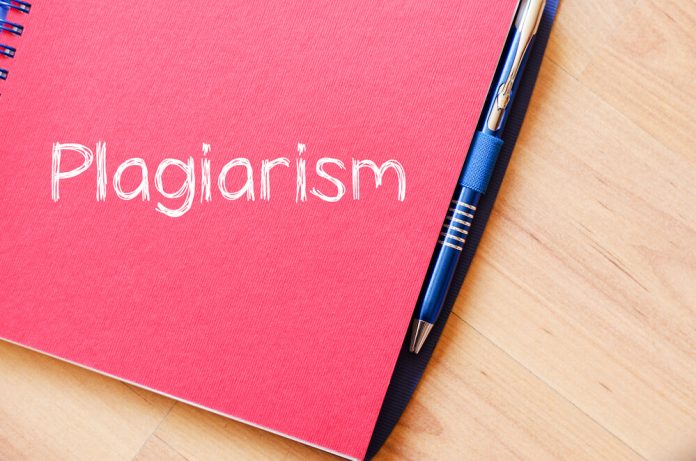This article is penned by Falgun Wairya, currently pursuing law from Symbiosis Law School, Noida. It aims to discuss the evolving concept of plagiarism and the laws and penalties associated with it.
Table of Contents
Introduction
The increased availability of information over the internet has exposed ideas and writings to theft. We understand theft as the act of stealing a material object from someone. With the introduction of ‘intellectual property’, which covers the creation of one’s mind, such as inventions, ideas, literary and artistic work, names, symbols, designs and everything one can publish, we got introduced to the term ‘IP theft’. This kind of theft means robbing ideas, inventions, creative ideas, or anything that comes under the ambit of IP from a person or a company.
In this era of digitization, where even the tiniest data is recorded online and is available on the internet, the urge to copy has increased. Instead of building new ideas and notions that are original, people tend to use ideas that belong to someone else, and this is where the concept of plagiarism has unfolded. This article talks about plagiarism and the legal consequences that follow.
Plagiarism : scope and meaning
Plagiarism refers to stealing someone’s intellectual property with or without giving credits to the original author or owner. It refers to copying or including someone’s work with or without their consent and presenting it as our own. Simple terms such as ‘copying’ and ‘borrowing’ hide the seriousness of the act and the consequences. People tend to copy paragraphs, illustrations, charts, designs, ideas from different research papers, articles, blogs available online and club it. Then present the material as their own; this is what we call ‘plagiarism.’
With the vast capabilities of the internet and computers, the idea of protecting IP extends far beyond text and essays. Today, computers are used to commit IP theft crimes involving images, music, sound, software, and various other products. The theft can be broken into three categories:
- Stealing with the web.
- Stealing within the web.
- Stealing from the web.
Plagiarism of ideas
Plagiarism is not essentially copying out of published material. It can also be of unpublished or unrecorded manuscripts, such as ideas. Ideas or words are considered a person’s intellectual property and are protected by tags such as copyright, patent, trademark, etc.
If a person includes another’s ideas or words in his work or unquotes the part said or quoted by someone, it all comes under the ambit of plagiarism and is an offence.
Different categories of Plagiarism
Plagiarism is of multiple types. Below, we have discussed some common plagiarism:
Complete Plagiarism
This kind of plagiarism is the most severe and occurs when a researcher extracts a study or an entire manuscript that belongs to someone and submits it as their own. Plagiarism under this category is considered equivalent to intellectual theft and stealing.
Verbatim Plagiarism
As the name suggests, if we copy and paste pieces from a source directly into our work, that makes up the verbatim plagiarism.
Self-Plagiarism
It arises when an author reuses pieces or ideas from its previously submitted work without acknowledging it; it constitutes self-plagiarism.
Paraphrasing Plagiarism
This kind of plagiarism occurs by paraphrasing someone’s ideas without acknowledging them or providing an appropriate citation.
Mosaic Plagiarism
This kind of plagiarism is dishonest, intentional and difficult to detect. In this kind, ideas and works of other interplay in our research is also called patchwork plagiarism.
Accidental Plagiarism
This kind of plagiarism is unintentional, i.e. committed by mistake or neglect or intentional paraphrasing and is common in students’ work.
Plagiarism v. Copyright Infringement
People tend to confuse plagiarism and copyright infringement as they both are associated with the theft of material obtainable online. Though the words are used interchangeably, they have different meanings and consequences. Copyright infringement is using data secured by copyright without permission. In contrast, plagiarism is concerned with using data of someone else and projecting it as our own, even if there exists no copyright for the original author.
- While copyright is unauthorized and unlicensed copying of work, plagiarism is using someone’s work without giving proper credits.
- While plagiarism is primarily a violation of academic guidelines and is governed by them, copyright infringement is illegal and is dealt with by federal laws.
- Plagiarism is an offence against the author, while copyright infringement is an offence against the copyright holder, and it may or may not be the same person as the author.
- Plagiarism can also apply if an idea is copied, but copyright infringement applies only when specific content is copied, protected by copyrights.
Copyright infringement occurs exclusive rights are infringed, and those rights are:
- To reproduce or make copies of the work.
- To distribute copies to the world.
- Create a derivative work.
- To display or perform the work publicly.
Plagiarism is the unethical conduct of the researcher, which deviated from the moral code. Using ideas, works and efforts of others and presenting as our own is a moral wrong. Plagiarism is a crime that is not recognized under law but is dealt with as a civil wrong under Indian Copyright Act, 1957.
Current legal framework surrounding plagiarism
There is no specific provision that deals with plagiarism as an offence in India but is implemented by Section 57 and 63 of the Indian Copyright Act, 1957.
Section 57 of the Indian Copyright Act, 1957
The section deals with the author’s special rights in cases of infringement. This section enables the author of the data, regardless of whether he has copyrights over the data partially or wholly or not at all. The section empowers the author to claim the authorship of the property which others have titled as his own. And in case of any modification, alteration, destruction, or any act done before the author’s copyright has expired, which would harm his reputation, empowers the author to restrain such action or claim damages for it. Subject to adaptations made covered under section 1(aa) of Section 52 of the Act, the author can not claim damages in that case.
The case under this section may be filed by the original author or by his legal representative.
Section 63 of the Indian Copyright Act, 1957
The section grants punishment for cases dealing with infringement of copyright or other rights secured under this act. The section excludes the right provided under Section 53A of the Act to be punishable under this act.
Section 63(b) of the Act provides punishment of imprisonment for a period not less than six months, which can be extended to a maximum of three years and with a fine, not less than fifty thousand and a maximum of two lakhs.
In a situation where the infringement was not made with the intent to gain in a business, the court may grant a punishment of fewer than six months and a fine of less than fifty thousand.
People under these sections can plead for a grant of an injunction or restraining order on publication of such data, which infringes their right or claim damages for the harm caused. The courts recognize the moral misconduct on the part of the wrongdoer and the original creator’s right.
Relevant case laws
The first case concerning section 57 of the Act was Mannu Bhandari v. Kala Vikas Pictures Pvt. Ltd and was filed 30 years after enacting the act. The case dealt with the expression of an artist, as it was contended by the plaintiff that the defendant’s movie ‘Samay Ki Dhara’ was mutilation and distortion of plaintiff novel ‘Aap ka Bunty’. The plaintiff pleaded for a permanent injunction on screening of the film, but later settled with the defendant. The filming rights of the novel were sold to the defendant for 50 thousand rupees.
The court held that the “‘other modification’ appearing in the sub-clause (a) would have to be read ejusdem generis with the words ‘distortion’ and ‘mutilation’. The modification should not be so serious that the modified form looks of the work looks quite different work from the original.”
In another case, Amar Nath Sehgal v. Union of India and Anr, which takes us back to 1957 when the Government commissioned Mr. Sehgal to construct a bronze sculpture. Mr Sehgal created a 140 ft. span and 40 ft. bronze mural sculpture placed on the entrance wall of Vigyan Bhagwa. In 1979 the sculpture was pulled down and moved to the storeroom of the Union of India; this deterioration took place without the permission of Mr Sehgal, who considered it a heritage of India. The plaintiff took shelter under section 57 of the Act. The court recognized an artist’s efforts and regarded their rights as the ‘soul of their work’.
The case identified the sculpture as an Indian heritage, granted a fine of five lakhs on the Government and ordered the sculpture’s return to the plaintiff, emphasizing the need to protect an author’s paternity right and integrity right. It was held that “Knowledge about authorship not only identifies the creator, it also identifies his contribution to national culture.” And that the language of Section 57 does not preclude the right to integrity concerning cultural heritage. Artists whose talent and imagination are among a nation’s most important cultural resources will be included in the cultural heritage. Via the lens of Section 57, it is possible to legally defend India’s cultural heritage through the artist’s moral rights.
Who can be held liable
In cases of plagiarism, the author of the concerned piece is liable for the offence. The publisher or the owner of the platform on which the data was published is not responsible for the wrong done on the author’s part. The publisher can state his unawareness of the offence committed by the author.
Need for amendments
Though the courts have actively dealt with infringement of an author’s right, there is still ambiguity as the term ‘plagiarism’ is not defined under any provision. The line between infringement of copyright and plagiarism is becoming a blur, neglecting the common practice of plagiarism committed by people. The different types of plagiarism except the complete plagiarism are often ignored, deteriorating the author’s originality.
With the increasing availability of data online and an increasing number of researches on a similar topic, the need to establish laws recognizing ‘plagiarism’ as a separate law has increased.
Plagiarism detection tools have increased, decreasing the seriousness of the issue; people tend to paraphrase their material to reduce the plagiarism percentage. Due to the unavailability of laws, matters are settled outside the court, and the original creator is not given the acknowledgement as the elite class buys his rights. Ideas or notions produced by the ordinary class are often purchased by fancy companies and studios and presented as their own.
Some modifications which are needed are:
- Recognition of the offence of plagiarism.
- Appropriate legal framework concerning it.
- Providing rights to authors without making copyrights requisite.
- Stringent rules in universities regarding plagiarism.
- A universal plagiarism detection tool used globally.
Increasing the scope of laws covering each kind of plagiarism, respecting the author’s right and providing credit to people as needed will do the job.
There is an urgent need for rules governing sources that provide paid data free of cost illegally, deteriorating the creator’s reputation.
Recommendations
To reduce plagiarism percentage in one’s work and to respect the original creator’s creativity, one should follow the following rules:
- Provide the correct citation for the work referred.
- Italics and quote the portion used from someone’s work or speech.
- Give adequate credit to the people associated with the project.
- Don’t present others’ work in a nicer slate, be original in your work.
There is the repercussion of plagiarism that is not legally binding. If plagiarised data or idea is found in one’s work, people tend to question their morality, and thus the reputation is harmed. Such situations occur intentionally but cause significant monetary loss and humiliation. For instance, if it is found out that the bestseller book has material that belongs to someone else, this could affect the author’s reputation immensely. It involves the person legally, economically, his reputation in society and his professional reputation.
Conclusion
Copying or borrowing others’ ideas or work before giving sufficient acknowledgement is a heinous crime and cannot be compensated in monetary terms. The originality of a job is its soul and to protect is its purpose. It deals with ethical obligations more than legally binding, which should be avoided.
In India, specific rules to regulate plagiarism in universities and on the internet are a utopia for the authors. Small creators should also be given recognition and credit for their ideas, and laws to protect them from exploitation should be enacted. Therefore, we live in a society where even what we think or generate can be stolen, but the judiciary provides the remedy for the infringement.
References
- https://www.ox.ac.uk/students/academic/guidance/skills/plagiarism#:~:text=Plagiarism%20is%20presenting%20someone%20else’s,is%20covered%20under%20this%20definition
- https://www.fbi.gov/investigate/white-collar-crime/piracy-ip-theft#:~:text=Intellectual%20property%20theft%20involves%20robbing,movies%2C%20music%2C%20and%20software
- https://www.wto.org/english/tratop_e/trips_e/intel1_e.htm
- https://www.plagiarism.org/blog/2017/10/27/is-plagiarism-illegal
LawSikho has created a telegram group for exchanging legal knowledge, referrals and various opportunities. You can click on this link and join:
 Serato DJ Crack 2025Serato DJ PRO Crack
Serato DJ Crack 2025Serato DJ PRO Crack











 Allow notifications
Allow notifications



